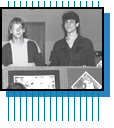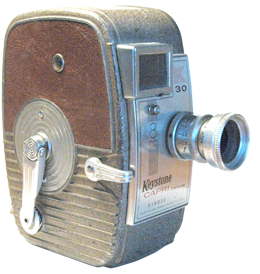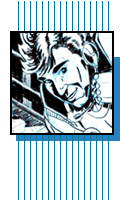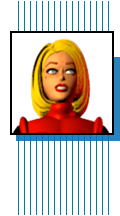|
• John Picha was born on St. Patrick's Day 1968 in Joliet, Illinois. He was raised in Frankfort, a suburb of Chicago, but his mind always seemed to be elsewhere. The little midwesterner was captivated by comics books, cartoons and animation, mythology and all things imagined. He made the world around him more interesting by seeing it through fantasy-colored glasses. A bicycle was a space craft, a bush became a triceratops, and, of course, there was always a bath towel hidden away for a quick change into a super hero. He was an artist before he knew it. Anything could became a drawing implement in his hand. At an early age his ability was recognized and encouraged by his family, and others noticed. In grade school he was enrolled in the gifted program, which was a lot more interesting than math. Though he excelled in all creative areas, the elementary teachers didn't know how to help expand on his abilities. Years later on a Jr High field trip, he went to the Art Institute of Chicago. It made a lasting impression. He was exposed to the fine arts for the first time. The images where giant and vibrant. They told stories with energy and purpose. It opened his eyes to a world of possibilities, color and unlimited choices.
At 16 he entered the fast food work force at a local hot dog stand. The job was fun but not always busy. Between customers he would doodle on to-go bags. Some customers received comic strips, super heroes or crazy cartoon characters in addition to their tasty vittles.
John finished high school in 1986 and was ready for the next challenge, college. His portfolio was accepted by every art school he applied to. Unfortunately, some of them were too pricey for a guy making $3.35 an hour. He originally chose the American Academy of Art, but decided there was a place better suited for him. He packed up the car and headed East.
The first was to the Brandywine, the second to the Frazetta Museum and the third was to a publishing company called Silver Burdette. The first two focused on illustration. The third housed an unexpected discovery. They were making art on these user-friendly computers called Macintoshes, and a program called Adobe Illustrator. It was love at first sight and John traded in his mechanical pencil for a mechanical mouse.
With the proceeds from the experiment, he bought a Mac IIci and a new program called Swivel 3D. He began moving in Z space. It was a new world.
The company was owned by Mike Saenz, a comic book illustrator whose work had inspired John back in high school. He also learned to refine his 3D approach from a mentor, Norm Dwyer. He honed his artistic edge and broadened his range of experience, both professional and freelance. The jump from CD-ROM to the web was abrupt and John was ready. He made the leap into the pre-flash era of the internet and made a mark. He helped build Apartments.com, then the first new media department at Encyclopedia Britannica. Even with the restrictions of the young internet they were still able to squeeze in some 3D to extend the web-surfers' experience. It was a time of innovation. They devised processes, workflow, and techniques. The efforts garnered awards and international press. The early web days were an extraordinary time of discovery. There were massive budgets and hours of client education. They organized campaigns, invented new tools, made over 1000 web sites and interactive projects, and even managed to squeeze in a few cartoons.
With the momentum of the cartoons, John and crew eagerly embraced a new project. A series of interactive movies designed to help immigrant children learn English. They would recount myths or folklore from other countries and include language lessons. The first was to be called Xieng Mieng, The Little Monk. The project was very rewarding and it looked like they were about to move into another new direction, but by the end of 2001 the dot-coms were drying up and the economy took a steep downturn and Think Tank closed its doors. The job market became scarce and the team had to break apart to survive. John began consulting at ABN AMRO, an international trade bank where he operated as a one-man art department creating animated presentations for their sales force. He also developed self-service, help-movies for their global trade platform, MaxTrad. Though the work was interesting, the environment was erratic and unstable. Currently John is operating an independent studio which concentrates on interactive design for the internet, 3D modeling for animation or 3D Printing, and bringing products to the iPad. John is a patented inventor, a published author and the creator of Thumbtraps, Pandora Driver and Skyracos. |
 |

 During
High School, John's enthusiasm for the illustration intensified.
He was vice-president and then president of the art club. He won
awards in several local art contests. It would have been rare to
see him walking without a sketch pad in tote. He discovered other
artists like Andrew Loomis, Heinrich Kley, and began to appreciate
their technique. He consumed images with the ravenous appetite of
a teenager and, of course, there was always an ample helping comic
books.
During
High School, John's enthusiasm for the illustration intensified.
He was vice-president and then president of the art club. He won
awards in several local art contests. It would have been rare to
see him walking without a sketch pad in tote. He discovered other
artists like Andrew Loomis, Heinrich Kley, and began to appreciate
their technique. He consumed images with the ravenous appetite of
a teenager and, of course, there was always an ample helping comic
books.
 John
was accepted to the Joe Kubert School in Dover, New Jersey.
The school focused on cartooning and illustration, but covered a
wide range of subjects. He had classes on figure drawing, design,
narrative art, painting technique, animation and others. The deadlines
were tight. Students had ten projects due each week. The environment
was like on-the-job training as he sat side-by-side with seasoned
professionals currently working in their respective fields. Living
in New Jersey wasn't cheap and John had to work full time, to make
ends meet. The challenge of a 40 hour work week and 35 hour school
week was intense, but rewarding. The school sponsored many guest
speakers and occasional trips to places he didn't know existed.
Three of them made a lasting impact on John.
John
was accepted to the Joe Kubert School in Dover, New Jersey.
The school focused on cartooning and illustration, but covered a
wide range of subjects. He had classes on figure drawing, design,
narrative art, painting technique, animation and others. The deadlines
were tight. Students had ten projects due each week. The environment
was like on-the-job training as he sat side-by-side with seasoned
professionals currently working in their respective fields. Living
in New Jersey wasn't cheap and John had to work full time, to make
ends meet. The challenge of a 40 hour work week and 35 hour school
week was intense, but rewarding. The school sponsored many guest
speakers and occasional trips to places he didn't know existed.
Three of them made a lasting impact on John. 
 John
replied to an ad for a 3D artist in the newspaper. It was the first
he'd ever seen. On April Fool's day 1994 he began working for Reactor,
a Chicago based company developing CD ROM games. At the time, it
was a dream job. John consumed a seemingly endless supply of software.
He now had access to high-end applications of the time like Electric
Image, Alias and Director. The real challenge of the job was to
try to beat software limitations by combining different packages.
John
replied to an ad for a 3D artist in the newspaper. It was the first
he'd ever seen. On April Fool's day 1994 he began working for Reactor,
a Chicago based company developing CD ROM games. At the time, it
was a dream job. John consumed a seemingly endless supply of software.
He now had access to high-end applications of the time like Electric
Image, Alias and Director. The real challenge of the job was to
try to beat software limitations by combining different packages.
 John
wrote, directed, and with his team animated web commercials. Then
they made a couple crude cartoon shorts for the state of Illinois.
One focused on energy conservation, and the other covered recycling.
John
wrote, directed, and with his team animated web commercials. Then
they made a couple crude cartoon shorts for the state of Illinois.
One focused on energy conservation, and the other covered recycling.